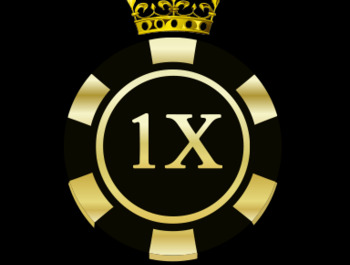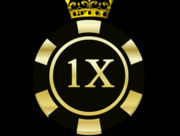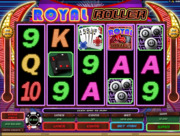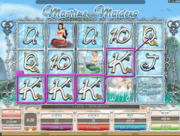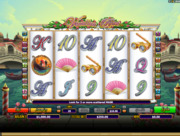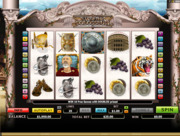Blackjack Tutorial: How to Play Blackjack
Objective of the Game
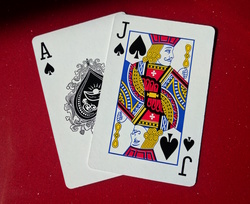 Understanding the rules of Blackjack couldn’t be easier. Unlike Poker, which involves memorizing numerous hands and understanding which types of hands are stronger than others, Blackjack is about as straightforward as it gets when it comes to table casino games. If you’ve never played the game or if you just need a refresher on it, read through this Blackjack guide and you’ll be collecting your winnings in no time.
Understanding the rules of Blackjack couldn’t be easier. Unlike Poker, which involves memorizing numerous hands and understanding which types of hands are stronger than others, Blackjack is about as straightforward as it gets when it comes to table casino games. If you’ve never played the game or if you just need a refresher on it, read through this Blackjack guide and you’ll be collecting your winnings in no time.
So what’s the main objective of Blackjack? It’s simple: get a hand that is higher in value than the dealer’s hand without “busting” (i.e. going over the value of 21). Let’s take a look at a couple of examples. If your hand is worth 19 points and the dealer’s hand is worth 18 points, you win. If your hand is worth 20 points and the dealer’s is worth 21 points, you lose. Similarly, if your hand is worth 22 points and the dealer’s is worth 19, you also lose. Why is that, you ask? Because you busted (went over the maximum point limit of 21).
Therefore, a perfect hand adds up to 21 points—no more, no less. This is what’s called a “blackjack”, which is where the name of the game originates. Do that and you maximize your winnings, provided, of course, that the dealer’s hand isn’t worth the same amount. If it is worth the same amount, then that is called a “push” and no one wins. The dealer simply restarts the process and deals new cards to the player(s). If, however, you get a blackjack and beat the dealer (either because his total card value is lower than yours or because he busted), then you get a 1.5x payout on your original bet. Sounds pretty good, right? Although the odds are slightly in the dealer’s favour because he gets to play his hand after you do, the element of randomness is so high in Blackjack that you’d be hard-pressed to find better odds in any other game. This is one of the reasons that Blackjack is the world’s most popular table casino game.
So what are the cards in Blackjack actually worth? How do you know if your hand is worth 21 points or not? Keep reading this Blackjack tutorial to find out.
Know Your Card Values
Since a deck of cards consists of quite a few cards, it might at first glance seem a bit overwhelming to grasp what values the various cards in a game of Blackjack actually have. But fear not! This is actually very easy. The value of any card from 2 to 10 is the “face value” of the card. In other words, a 2 is worth 2 points. It doesn’t matter whether it’s a 2 of hearts, spades, diamonds or clubs—”suits” (the type of card) do not mean anything in Blackjack. Therefore, a 5 of spades is worth 5 points, and a 10 of clubs is worth 10 points. Pretty straightforward so far, right?
“Face cards” (ones that have a character like the King, Queen or Jack) are each worth 10 points in Blackjack. So if your hand consists of two cards, let’s say a King and a Jack, then your hand is worth 20 points.
The only card that is a little bit different in the game of Blackjack is the Ace card. This card is considered a special card because it can actually have one of two values: 11 or 1. You can choose whichever value you wish to play! So if you have this card in your hand, you can be a bit more strategic. Depending on how many points your current hand totals, you might want to ask your Blackjack dealer to give you another card or two (in a live casino, you would say “hit me” anytime you want another card).
Let’s do a quick recap to make sure we’re on the same page here. You have three cards in your hand, a 9, a King and an Ace. Through some simple addition we find the points are as follows:
9 (the 9 card) + 10 (the King card) + 1 (the Ace card) = 20 total points
Although the Ace card could be worth 11 points, you obviously would never play that value in this particular hand because then you would bust.
Rules of Blackjack: A Brief Overview
In addition to the straightforward rules mentioned above, there are a few other rules and concepts you should definitely know about Blackjack if you’re interested in giving it a go yourself. Among these are “splitting pairs”, “doubling down”, “surrender” and “insurance”—all very common terms within the game. To maximize your fun (and winnings, of course), we highly recommend that you read our Blackjack Rules guide. This guide explains everything you’ll need to know to understand the logic behind these rules and how you can use them to your advantage while playing Blackjack yourself.
Blackjack Strategy
Generally speaking, a wise Blackjack strategy involves keeping the total money you are willing to wager going for as long as you can. A common mistake among novices is getting too excited and blowing their entire bankroll in a few quick hands. A much smarter approach would be to cautiously gauge how you’re doing in the game and progressively increase or decrease your bets accordingly.
A much more specific Blackjack strategy consists of working the defensive more than the offensive. In other words, always try to keep in mind what the dealer’s hand might be. If you see that the dealer’s visible hand is quite strong, ranging from 7 to 10 or an Ace, you will probably want to keep collecting cards until your total point value is 17 or higher. If, however, you see that the dealer’s hand is quite weak, let’s say 4 to 6 total points, it’s wise to stop at 12 points or whatever hand you have that is close to 12 points. Basically, you never want to risking busting, as then you’re pretty much bound to lose.
There are two main types of hands in Blackjack, a “soft” hand and a “hard” hand, so if you want to develop a good Blackjack strategy, you should understand the difference between the two. A soft hand is one that consists of an Ace card and another other card that is valued at less than 10. If you have a soft hand, you can safely ask for another card because no matter what it is, you won’t bust whether you count your Ace card as having a value of 1 or 11. A hard hand, therefore, is one that does come with a risk of busting.
Beyond this, each Blackjack game has what’s known as a basic strategy, and it’s best represented with a table. An example of one basic strategy (there are many) appears below. Study it, devour it, dream it, live by it and memorize it! If a punter doesn’t have a strategy like this, the dealer will usually have a 5% advantage over him or her. However, if a punter does have a basic strategy, the dealer’s advantage drops TENFOLD to about 0.5%! Who knows, maybe one day you’ll be able to tell your boss to shove it and turn your interest in Blackjack into a profession. (Unlikely, of course, but hey it’s nice to dream.)










